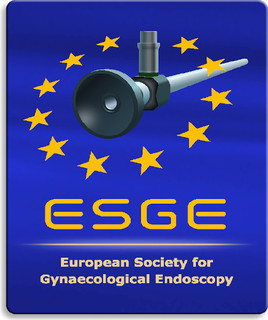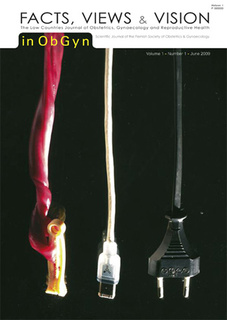Editorial to the first issue of Facts, Views and Vision
Published online: Jun 09 2009
The idea to start this journal was born several years ago. The birth of its first issue has followed a long and eventful pregnancy. The first and foremost consideration in the mind of the Editorial Board was the absence of a truly professional journal covering all aspects of human procreation in the lower countries of Europe. The Flemish Society for Obstetricians and Gynaecologists (VVOG) underwent a metamorphosis from a group of befriended colleagues meeting and eating around topics of common interest to a fully professional organisation with all that this implies: symposia, training courses, postgraduate update courses, international congresses and much more in all the subdisciplines of our profession, i.e. perinatal medicine and obstetrics, general gynaecology, reproductive medicine, senology and gynaecological oncology. What lacked in this ongoing process of development was a truly scientific journal. The challenge was and is huge. First, there is a journal already, appearing on a regular basis, called Gunaikeia which has been and will continue to be a means of communication between members of the VVOG. However, its scope is local and its scientific ambitions very humble. It has played a pioneering role in the past where nothing at all existed. Second, the Dutch Journal for Obstetrics and Gynaecologist also exists in the Netherlands. Therefore, the founders of the present journal needed time to be convinced of the need for a new journal with a very different vocation.
The vis vivendi, the will to live, of the present journal takes root in a wider approach to what a journal can be than is the case of a traditional journal. Facts, Views and Vision aims at publishing an increasing number of original scientific papers but its scope does not end there: the globalisation of our world and the multicultural origin of our patients, from all across Europe and belonging to all social, ethnic, religious and cultural backgrounds, has made reproductive medicine, obstetrics and gynaecology a truly international and cross-professional area. This journal focuses on that wide scope of aspects that puts the modern human with a medical, a social, a psychological reproductive defect or handicap at the centre of its interest.
In this the journal wants to be different from other related journals covering the same field of action. Its manifold aspects appeal to individuals with very different walks of life: physicians, e.g. gynaecologists, urologists, endocrinologists, andrologists, surgeons, psychiatrists, paediatricians, plastic surgeons, radiologists, oncologists and others but also to many professionals who although not medicals in the strict sense of the word, nevertheless have a well-earned place in this highly interactive field: midwifes, nurses, embryologists, biologists, veterinarians, mental health professionals, counsellors, psychologists, laboratory personnel, ICTspecialists, communication experts, but also administrative personnel, ethicists, religious counsellors, philosophers, financial analysts, demographers, statisticians, insurers, pharmacologists, pure breed researchers, politicians and others. All of these groups are offered here a forum to publish their work and voice their opinions.
The journal combines a section of pure and hard science (facts) with a section containing insights and convictions gained through experience (views) and a section where the future may germinate (Vision). Because of this wide social perspective, the journal does not challenge the existing international journals who are burdened with an ever increasing amount of mainly purely factional publications. Although it aims at a wide international readership, it will consider itself in the first place the scientific journal of the intensely thriving in-crowd of lower countries’ reproductive professionals of all colours and banners.
Potential authors are invited to present their results on any aspect related to human procreation, which will not be further specified here, because to define is to limit. Results from original research are most cherished because it will enable us to file in due time for certification to Medline. Summaries of doctoral work or PhD theses will be given a special place and we aim to follow up promotional work by young authors that is often classified too quickly on the shelf and not brought to the deserved attention to a wider interested audience. Good ideas, bad ideas, controversial, challenging and even provo cative views regarding any aspect of all medical disciplines are welcome, provided they relate to reproduction and the functioning of the reproductive organs, and provided they are formulated as a contribution to the quest for a comprehensive understanding of human procreation.
A good idea has many fathers, a poor idea is an orphan. Therefore this is the place and time to acknowledge that the true father of this journal is Willem Ombelet, who had the grace to ask me to write this editorial, granting me full freedom of writing. Supported from the early hours by a small group of similarly inspired colleagues, his initiative needed time to mature and is now ready for launch. Although we are sure that the approach is original, we are not sure it will succeed or last. This will depend on whether the formula will appeal many to take to their computers and write. The editorial board has been carefully constituted and is supported by a young and motivated team of back office collaborators. The guidelines to authors are logically constructed and the online reviewing process is kept simple. We will go through children’s diseases and perhaps we will falter. But we truly think there is a need for a journal that starts off humbly and that can grow by sticking to its founding principle of broad diversity in combination with different levels of intensity. Facts alone tend to be isolated in every narrowing niche of professionalism; views alone tend to degenerate into strong opinions nobody is interested in; and vision alone tends to become a nightmare if unsupported by facts and a beholder’s sharp view. In conjunction, they constitute the basic elements needed for a truly translational medicine, where findings from the bench may become part of a clinician’s view and where today’s clinical expertise may take a jump from a sleepwalker’s routine to the disruptive insight of the visionary.
Jan Gerris, MD PhD
Division of Reproductive Medicine
Ghent University Hospital
Belgium



